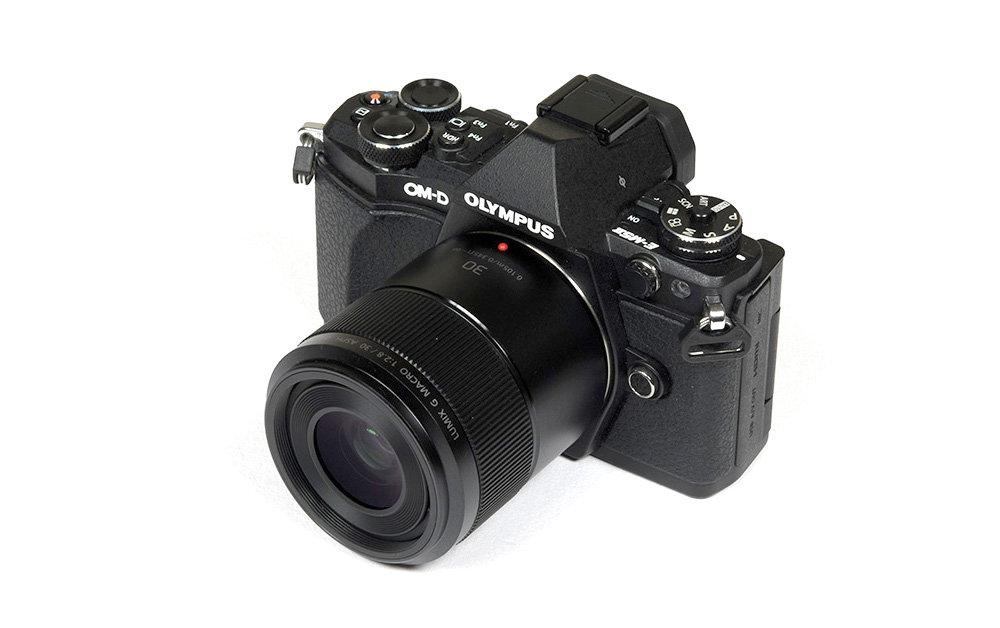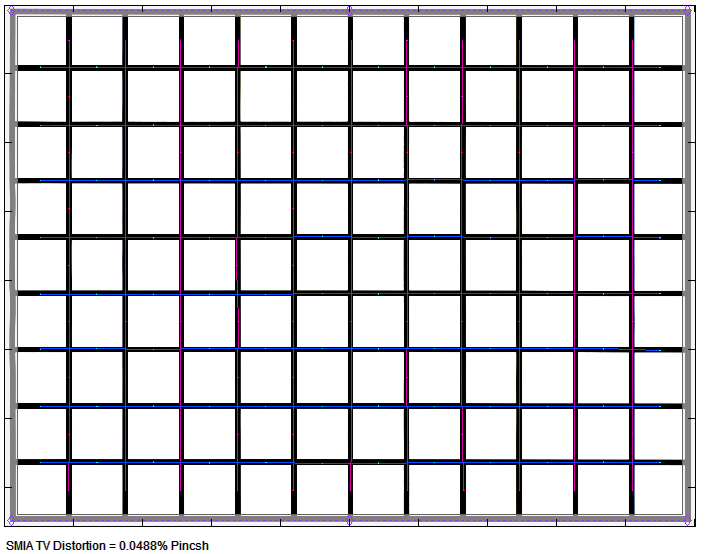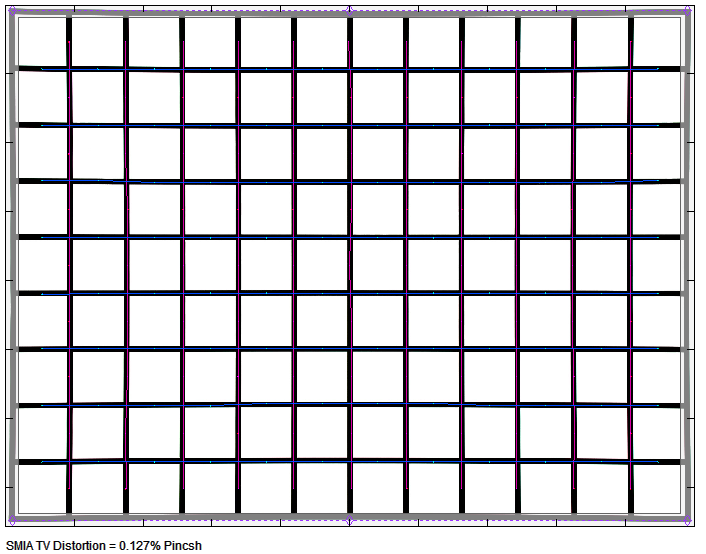
The Panasonic Lumix G 30mm f/2.8 ASPH Mega OIS macro is the third AF macro lens for the micro-four-thirds system. At 30mm it is currently the widest macro option with a field of view equivalent to “60mm” on full format cameras. Thus it behaves like a moderate tele macro lens. Such lenses are usually not the first choice among enthusiasts because of the minimum working distance is very close to your main subject. Small critters tend to get rather nervous … who wouldn’t at just 2cm or so? A max. aperture of f/2.8 may also be fast by zoom standards but it’s not overly exciting when compared to -say- a 25mm f/1.4. On the positive side, it is the most affordable of the MFT macro gang at around 300US$/EUR.
The build quality of the Lumix lens is pretty good. The body is, surprisingly, made of metal based on a metal mount. The focus ring operates smoothly. The physical length remains constant throughout the focus range. The lens features an optical image stabilizer (Mega OIS) which should give you an equivalent gain of 2.5-3 f-stops. Unfortunately you have to fiddle around in the camera menu to (de-)activate it – there’s no dedicated switch for this on the lens itself. The OIS is active on Panasonic cameras only. On Olympus cameras you have to rely on the camera’s stabilizer (which works nicely anyway). A cost cutting measure is the lack of a supplied lens hood.

Macro lenses are usually not terribly fast when it comes to auto-focusing but the Lumix 30mm f/2.8 does actually a pretty good job here. Of course, it takes a while to focus throughout the focus range but as long as you stay at conventional distances it operates quite fast and essentially noiseless. A focus limiter is not provided unfortunately. Manual focusing works “by wire” thus you trigger the AF motor by turning the focus ring.
| Specifications | |
|---|---|
| Equiv. focal length | “60mm” (full format equivalent) |
| Equiv. aperture | f/5.6 (full format equivalent in terms of depth-of-field) |
| Optical construction | 9 elements in 9 groups inc 1x aspherical element |
| Number of aperture blades | 7 (circular) |
| min. focus distance | 0.105m (1:1) |
| Dimensions (L x W) | 63.5×58.8mm |
| Weight | 180g |
| Filter size | 46mm |
| Hood | – |
| Other features | macro, image stabilizer |
Distortion
The Micro-Four-Third system uses an automatic distortion-correction system thus from a user perspective, there is little to worry about. The final images are essentially free of distortions.
This is mostly true for the uncorrected RAW image as well. Images show just a tiny bit of pincushion distortion which is nothing to worry about is most conditions.


Vignetting
Auto-correction is also applied to the vignetting characteristic. Images shows a very mild light falloff of around 0.5 EV (f-stops) from f/2.8 to f/5.6.

The RAW vignetting stays within the typical limits. Thus it’s high at f/2.8 but drastically reduced at f/4 and roughly in sync with the corrected image from f/5.6 onward.
MTF (resolution)
Macro lenses tend to be sharp beasts and this applies to the Panasonic Lumix 30mm f/2.8 ASPH Mega OIS macro as well. It is actually diffraction-limited because it reaches its peak performance at f/2.8 already. The center quality is excellent at this setting and the borders and corners are easily very good. Diffraction effects start to kick in at f/5.6 but f/8 and f/11 remain usable with good to very good results. f/16 should be avoided and f/22 results in an image soup really (this is a physical limitation).
The tested sample had a good centering quality.
Please note that the MTF results are not directly comparable across the different systems!
Below is a simplified summary of the formal findings. The chart shows line widths per picture height (LW/PH) which can be taken as a measure of sharpness. If you want to know more about the MTF50 figures you may check out the corresponding Imatest Explanations.

Chromatic Aberrations (CAs)
Lateral CAs (color shadows at harsh contrast transitions) are very low at large to medium aperture settings. They increase a bit at very small apertures but, as mentioned, you shouldn’t use the lens beyond f/11 anyway.
We used an Olympus camera for testing. Panasonic cameras are automatically correcting CAs under the hood.

Bokeh
Macro lenses are usually used in very shallow depth-of-field situations so the rendition of the out-of-focus blur is an important characteristic. The Panasonic lens is pretty good here albeit not perfect.
The inner zone of out-of-focus highlights is somewhat busy and there’s a bit of an outlining effect that increases the more you stop down. The aspherical element is the most likely candidate responsible for this effect.

The general blur is very smooth both in the image background and foreground.

Bokeh Fringing / Longitudinal Chromatic Aberrations (LoCA)
So-called bokeh fringing is an effect that occurs around the focus point (on the Z-axis). It’s visible as halos of different colors in out-of-focus areas – magenta (red + blue) in front of the focus point and green beyond.
The Panasonic lens isn’t overly fast so this aspect is rather underdeveloped. There are some traces at f/2.8 and a tiny bit at f/4 but this is hardly a show stopper.

Sample Images
The Panasonic Lumix G 30mm f/2.8 ASPH Mega OIS macro delivered a more than solid performance during our tests. The lens is extremely sharp especially at f/2.8 and f/4. Low lateral CAs contributed to the very high sharpness perception. Unlike some other MFT lenses, it is a fully corrected lens thus distortions are marginal. The vignetting relies on auto-correction at large apertures so you have to live with increased sensor noise in the image corners at f/2.8. The original (RAW-)vignetting is reasonable though. The bokeh is generally very smooth although out-of-focus highlights aren't perfectly rendered.
The build quality of this little Panasonic lens is quite impressive. It may not feel like much but the metal body is reassuring (although that's somewhat subjective). The constant physical length as well as the smooth focus ring are also appreciated. Weather sealing is not provided though. The AF is noiseless and it's also fast unless it has to hunt throughout the focus range. We miss a focus limiter but given the low price tag, we probably can't have it all.
Technically there's nothing to complain about the Panasonic lens. It's sharp, small and affordable. However, if macro photography is really your thing, it probably makes more sense to check out the Olympus M.Zuiko 60mm f/2.8 ED macro. The Olympus lens isn't superior but it can provide a longer working distance to your main subject. Even if you are not hunting bugs, it makes life a lot easier as far as scene lighting is concerned.
-
Optical Quality
-
Build Quality
-
Price / Performance

